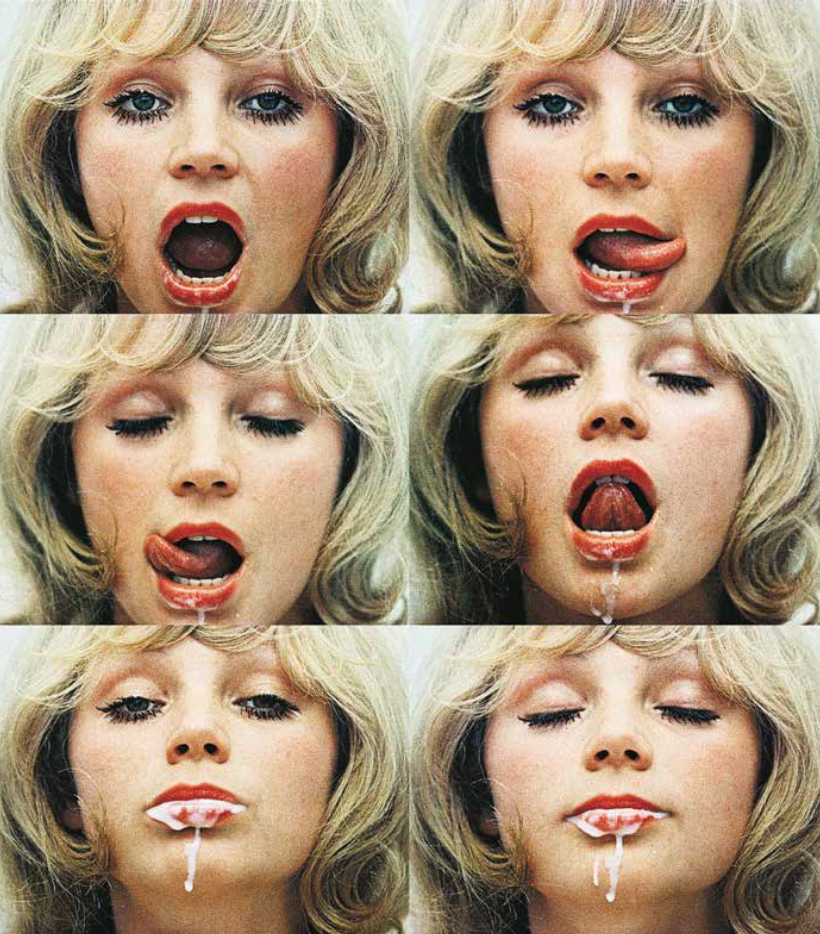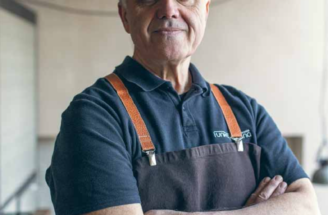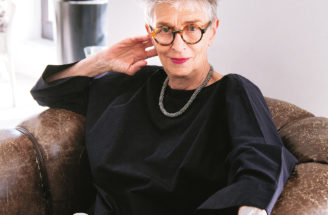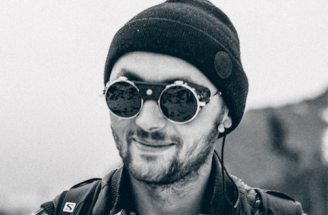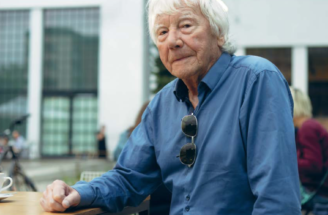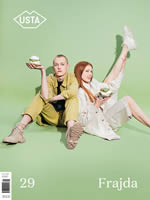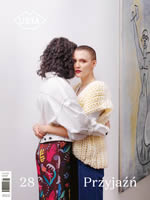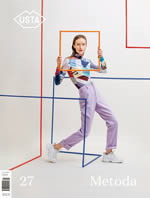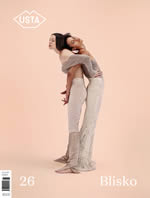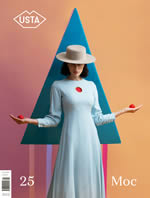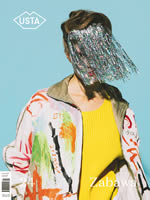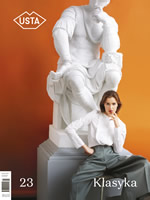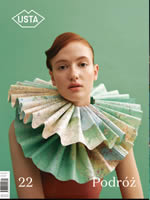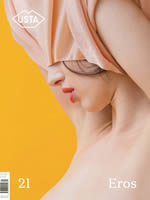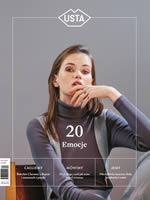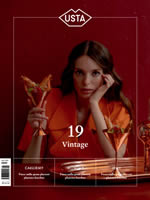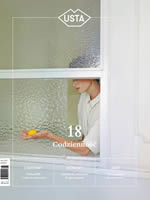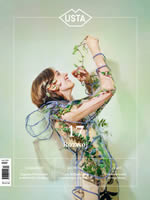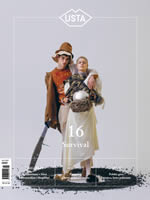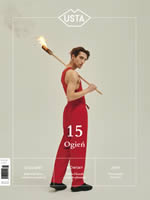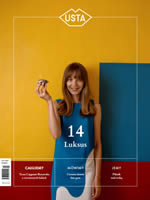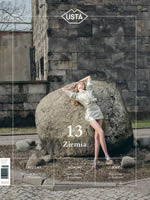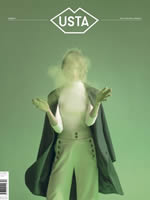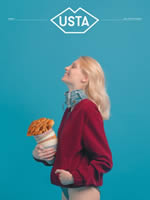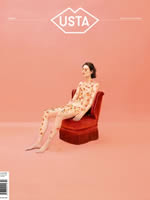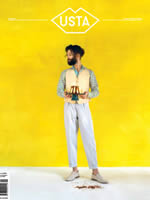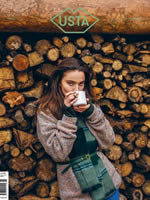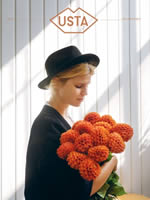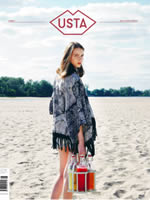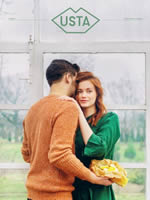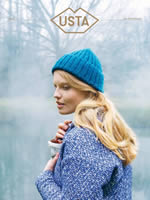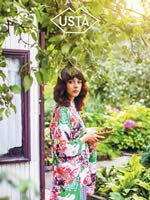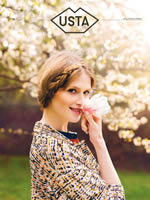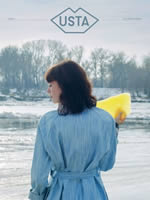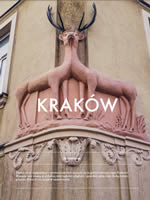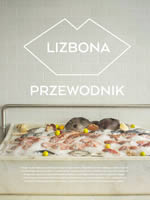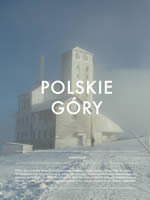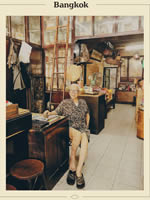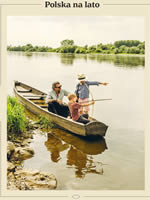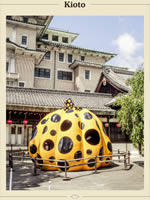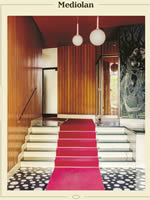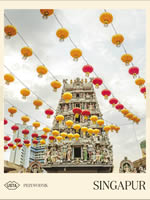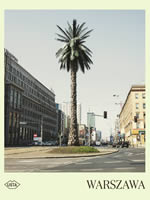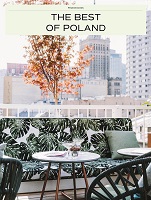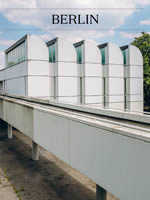An energetic blonde woman in dark sunglasses opens the doors of a hotels’ apartment. Black jacket, energetic moves. Is she really 78? This is hard to believe. From the first minutes of our encounter, we are truly fascinated by her energy, openness and laughter.

We are just few hours before the opening night of the first in many years, big exhibition of Natalia LL at the Warsaw’s Centre for Contemporary Art. The artist is excited, but also a bit tired. She’s been in Warsaw for several days now, mounting the exhibition, talking to journalists, fans and friends. Luckily, she also agreed to a meeting with USTA Magazine. It turned out we have a lot in common…
The lips are at the centre of in your cycle “Consumer Art”. They are fed with bananas, sausages and dripping in kissel. Do you remember the moment when you came up with the idea for this series?
Natalia LL: I started with taking photos of myself. I was pronouncing a word, a mystery-word, a series of modulations with my mouth. Then I registered it with a camera.
Today, can you reveal what was that mysterious word?
Oh no! It is still a mystery! It was 1971 and my intention was to register all the simple, common, daily activities: talking, eating, sleeping, sitting… This is where most of my major series, such as “Consumer Art” and “Dreaming” come from. I must say I haven’t used all of them. I still have something on the side to fill my artistic life programme until the end.
Everyday life is something really close to us, especially when it is about everyday pleasures. Our USTA (Eng. Lips) Magazine talks, eats and kisses…
My big installation “Yes” in Zielona Góra is about talking…
So, in the end you are revealing one of the secret words!
At the time, we were meeting with colleagues like Ludwiński, Czartoryska, Starzyński, Stażewski at various symposiums. At one of them, there were two men who called me from the meeting room, took me to the exhibition and asked “What does the word ‘Yes’ mean?” At the same exhibition there was also an installation with thousands of shots of copulation, you could look at through a peephole but they were not interested. They were asking about the word “Yes” because for them it had a political meaning. I told them that this is my expression of acceptance for art and that is how it ended. They left.
There were also exhibitions that the censors were closing.
Yes, it did happen. They said two shows and that’s it. And one had to comply with this decisions.

The series of photos with a couple having sex can still be perceived as quite controversial in our Catholic country. How about back then? It must have been shocking!
At the end of 1960s I was taking loads of erotic, copulating documentations. It was called “Intimate Photography”. It was me with my husband Andrzej Lachowicz. We loved each other very much and it was amazingly liberating for us as artists to takes phots of each other during a sexual act. He was taking pictures, I was taking pictures… I wasn’t allowed to exhibit these works. Finally, they agreed to put this on display but only in Zielona Góra. We built a special box with soviet, wide-angle viewer. Can you imagine that, some physical workers who were on the site, got inside at night and were so interested that they demolished one of the walls of the box? They wanted to come inside and see the photos at close… Fortunately, the wall was easy to re-build.
Is it hard to be an object and an artist at the same time? Was there anyone assisting you? Who was pressing the shutter button of the camera?
We had a self-timer and cable release remote control so it wasn’t that difficult.
How many acts did you register?
A lot. Over one thousand.
Wow! How did you choose the special ones that you decided to include in the exhibition. What were your criteria?
Definitely a good lightening and the authenticity of the act.
And your husband wasn’t complaining? He wasn’t fed up with it? Didn’t he ask “Natalia, come on, that’s enough…”?
Oh no! Let me tell you something… Andrzej Lachowicz is a wonderful man, the type of man you hardly find these days. He never had enough (laughs)! The type of a man that I chose. And we were so deeply in love. Besides, we were making our revolution in art. We established Permafo gallery, which presented works of art that stood in opposition to realistic or even abstract painting. Our goal was to concentrate on the idea of art, not its realisation.
At the conference yesterday, you said something very interesting – the fact that Polish conceptual art was born in Wrocław was no accident. The city at the time was deconstructed; it was a jumble of different nationalities, traditions, histories.
Just like New York! In Wrocław of the time, there were multiple layers, all this creative exchange and buzz.
You named yourselves the cool generation, because, as Ludwiński and Chwałczyk put it, you were not interested in fervent, intellectual discussions.
We used to meet at the Creative Unions’ Club in Wrocław’s old market. It was a member’s only club, you had to have a member’s card to enter. Most of us were graduates of the National Higher School of Plastic Arts: Makarewicz, Lachowicz, myself. Apart from us, there were all the people from Jerzy Grotowski theatre, the actors of Henryk Tomaszewski pantomime, poets, like Stachura, all of them were coming.
La bohème, in one word. How were you spending your time?
There were lectures and poetry nights. Nevertheless, they would all finish the classic way – with vodka, just plain vodka, because no other alcohols were available. And we did drink a lot. Today the Club doesn’t exist anymore, they opened a Bierhalle in its old location. I’m really sorry because it was a place with amazing creative energy, a place where you would always meet interesting people.
Back then, at the end of 1960s you were finishing your studies. What was the situation of young artists? What was your plan for life?
To live! I graduated from glass design and photography. I didn’t want to work at the glass factory, I chose photography. I had advertising commissions. I was taking photos of the first giant computers Odra – they were as big as wardrobes…
Oh, I know them from the Museum of Technology, they are beautiful!
I must say they weren’t too photogenic, the photos had to be perfect technically because they were then published in some catalogues and prospectus sent West. I was photographing for advertisement already in the 1960s – perfumes, flowers, still nature. This is how I was making money for art, which no one was buying from us at the time. You know, young artists first need to establish themselves with a couple of exhibitions for an institution to buy their works. When you had an individual exhibition, the culture department would buy two works for their archive and later the custodians of the museums appeared to buy something for the collections. That was also an opportunity to earn some money.
You were also spending money on your art. Did you have to pay for the studio and the models posing for your works? Please tell us more about those girls, who were posing for the “Consumer Art”. We mostly know the charming blonde girl with braids, but there were more models in this series.
After I erased my surname Lach-Lachowicz during one of exhibitions in Warsaw, keeping just the initials Natalia LL, all the models that I engaged were my look-alikes, my alter egos.
Looks like they truly are. I heard people asking if the blonde girl with braids is actually you.
Ha ha! So, it worked! These girls were students, clerks from Wrocław. They really wanted to have their photos takes. I don’t even remember all the surnames, some of them have likely passed away already. The model with braids I liked the most at the time when I was exhibiting the series. She was a Lolita type. There was something perverse about this young girl eating sausages since these photos were actually interpreted as erotic…
No Wonder…
At the same time, there was another side to it. The art critics in the West were seeing the photos mostly as the criticism of the system. Not everyone remembers today that at the time you could buy hardly anything in Poland. You had to fight for bananas… And the taste of those unachievable bananas… They embodied the West, the wealth, the abundance. We were longing for bananas, and if you happened to get one, you would eat them slowly, celebrate each bite. That was the case not only for bananas, sausages were the same, I had to queue for them. Sometimes I was lucky to buy them from under the counter if I knew the seller. The bananas were on sale before Christmas, on May 1 and July 22. I knew about it and I planned the shootings according to these dates. The bananas we were getting were all green; sometimes they had to be opened with a knife, which you can see in some of the photos. There were also occasions when people were bringing me something from abroad…
These girls, they had to love working with you! Eating bananas and sausages – such delicacies!
Oh, yes. Sometimes they would also take them home.
Weren’t they ashamed? Or afraid of the obscene connotations to these photos?
Maybe some of them. Most of them, though, were students, they were aware of the character of the photos, they played with it. We had loads of fun, we were cooking kissel together.
Bananas, sausages, kissel – what other food was cast in these photo series?
Breadsticks, puddings, liquid jellies. I wasn’t eating much at the time and I wasn’t especially refined either. Although, I must say that back in the days in Wrocław there were many people from Lvov and Vilnius. For example, Andrzej’s family is from Vilnius and they would eat completely different from my family from Galicia, Bielsko Biala. It was only in Wrocław that I discovered buckwheat groats and I fell in love with it. When we were students, we would go to Fąs, a bar that served only eastern cuisine: groats, beans, borscht and racuchy. Oh, and blini with caviar, my husband’s favourite dish. He would wolf down all the caviar. Even today, when I want to get him a present I come with caviar.

Did you cook at home?
Of course! In our today cult apartment in Ruska street where all the avant-garde was meeting. Andrzej specialised in herrings and other fish and I was cooking meat – ducks, hares, roasted meat, and pates. I loved pates; I used to eat them in Paris. I was watching the excellent French recipes and trying to re-create them back at home.
I thought you would say that you were living and breathing art…
No, no, no! Eating is art in the end. It can be art. It provides exquisite sensations. I have a lot of young friends who tell me about food all the time, what they cooked and what they ate. Sometimes they invite me to their dinners or suppers. Now that I live on my own, it is not worth cooking just for myself. Sometimes, though, we meet with friends and cook stuffed cabbage rolls and dumplings.
After eating it is good to have a siesta, you were falling asleep.
In “Dreaming” I was falling asleep but not so much after eating, as after taking sleeping pills from anaesthesiologist. A precise dose for a 3-hour sleep. In a capsule, in a tent, on the scene. I was dreaming. For me only the dreams mattered. And the audience were watching a sleeping artist. I was making sure they are not bored. There were the drawing of my dreams hanging on the walls. There was music and lectures. For example a lecture by mathematician Ruszkowski, who, proclaiming his mathematics theories standing in a special, transparent enclosure. It was very interesting that scientists were participating in opening nights of conceptual art at the time. They could talk with us, exchange opinions; we stayed close together. One time, can you imagine, they built a pyramid for me…
Just like for Cheops?
Yes! It was made of wood with not a single nail. It was in the field in Stabłowice, the outskirts of Wrocław. Inside there was a platform, I would lay down and fall asleep. Immediately! There was such an energy that I did not even have to take any sleeping pills. In a nearby forest, many people were coming and camping. They were laying around, cooking, drinking, talking…
That sounds very hippie…
Yes, late 1970s. Yoga, transcendental meditation…
The art we are discussing uses the body of the artist as the central object of the artistic creation. How does the body of the artist react to the passing time and to, let’s not be afraid to use this word, aging? You also created many works about it, such as the series “Brunhilde and Odin”.
I don’t give up, I am not trying to stop the time. Many women fight aging and passing. Not me. I have never had any lifting. I accepted ageing normally, naturally. So did Andrzej Lachowicz. When I asked him if he would pose for me as Odin, the elder, he agreed without hesitation. This is his body – there is no reason to be ashamed.
Do you take any new photos?
It happens, but it is always analogue photography. I am devoted to film, I could never convince myself to shoot digital. I have several cameras and many lenses. Everyone can take photos with digital cameras; the analogue ones require you to know them. Of course, I have a digital camera, a compact in my bag that I use to register situations quickly but in the studio, I work with professional cameras.
Madam Natalia, you are an unusual example of liveliness. How do you do that? How to retain such an amazing vigour? Please share your secret, what is Natalia LL’s recipe for longevity? Is it about your pyramids?
Pyramids (laughs), no, no… I think we just shouldn’t worry too much.
Natalia LL, actually Natalia Lach–Lachowicz, born 1937 r. in Zabłocie near Żywiec, has lived in Wrocław since her studies. Intermedia and conceptual artist. She works in graphic design, painting, performance, experimental film, video, installation, photography and sculpture. Her works were exhibited in the major art galleries around the world. Natalia LL’s art inspired among others the exhibition of Maurizio Cajowa “Natalia LL. Secretum et Tremor” at Warsaw’s Centre for Contemporary Art.
Interview by Monika Brzywczy in march 2015, photo of Natalia LL by Krzysztof Kozanowski, rest of the photos from Artist’s archive.
Share this entry on Facebook or copy link
